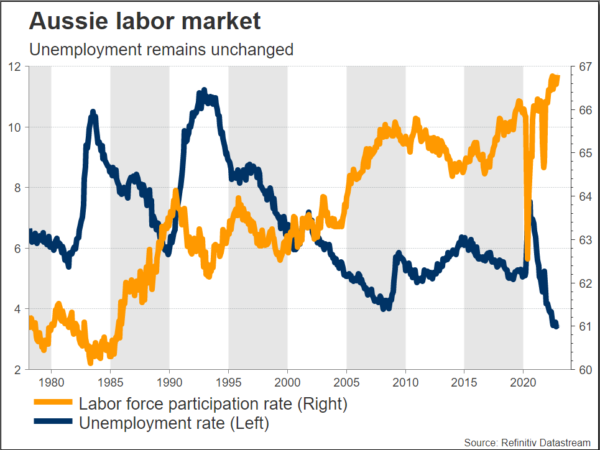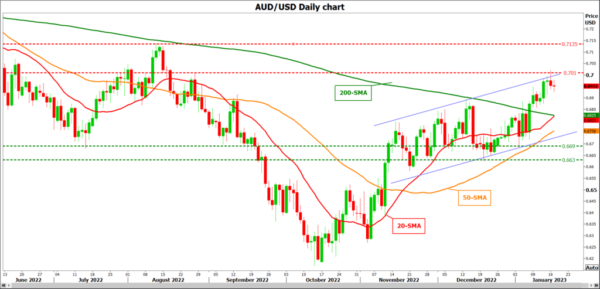Australia’s employment report for August is scheduled to be released on Thursday at 01:30 GMT, and it is believed that these data will attract some interest. Ahead of the data, the Australian dollar fell near $0.6900 after a significant pullback off the five-month high around $0.7000. While the domestic economy is robust, the country’s heavy exposure to China is giving investors another reason to be bullish on the currency after China’s reopening.
Stable unemployment rate is expected
A solid labor market is partially responsible for the present surge in consumer confidence, robust household spending, and high earnings and inflation, all of which have contributed to the RBA’s current cycle of rate hikes.
The number of people with jobs climbed by 64k in November, which contributed to the unemployment rate being at a 50-year low of 3.4%. In keeping with a softening in previous polls, it is anticipated that employment growth will drop to 22.5k in December. Furthermore, job vacancies fell by 4.9% over the three months leading up to November. It is anticipated that the unemployment rate will not move from its current level of 3.4%.
Interest rate futures are pricing in a probability of approximately 65% for a rate increase of 25 basis points (bps) at the RBA’s board meeting in February. This would bring the cash rate up from 3.10% to 3.35%. Further along the rates curve, the market anticipates one more rate hike of 25 bps in the first half of this year. This would bring the cash rate to 3.60%, which is predicted to be at or near the RBA’s estimate of the terminal level.
The Australian dollar, which is very sensitive to developments in China, has been the best performing major currency so far this year, as concerns about a worldwide recession have been fueled by disappointing economic data from China as a result of strict Covid-19 controls, so its strong performance is unlikely to continue. A combination of positive sentiment toward risk assets, anticipation of China’s reopening, and the recent announcement that China will lift its embargo on some Australian exports has sent the Australian dollar higher.
Aussie shows signs for bull-market
Aussie/dollar is showing some positive signs after the bounce off the 30-month low of $0.6170 on October 13. The pair has been developing within an ascending channel since mid-November and the 50- and the 200-day simple moving averages (SMA) are ready for a golden cross.
The pair could move higher if the employment report surprises on the strong side and unemployment declines further. The price is likely to test the $0.7010 resistance level, taken from the latest highs ahead of the $0.7135 barrier.
On the other hand, if the unemployment rate rises, the bears may sell the pair, visiting the bullish crossover within the SMAs near $0.6820. Steeper downside pressures may lead to the lower boundary of the channel and the 50-day SMA at $0.6750. Any moves lower could open the way for a bearish market.






![Week ahead – ECB set to cut, BoC might pause as Trump U-turns on tariffs [Video]](https://www.actionforex.com/wp-content/uploads/2018/04/f-ecb29-218x150.jpg)








